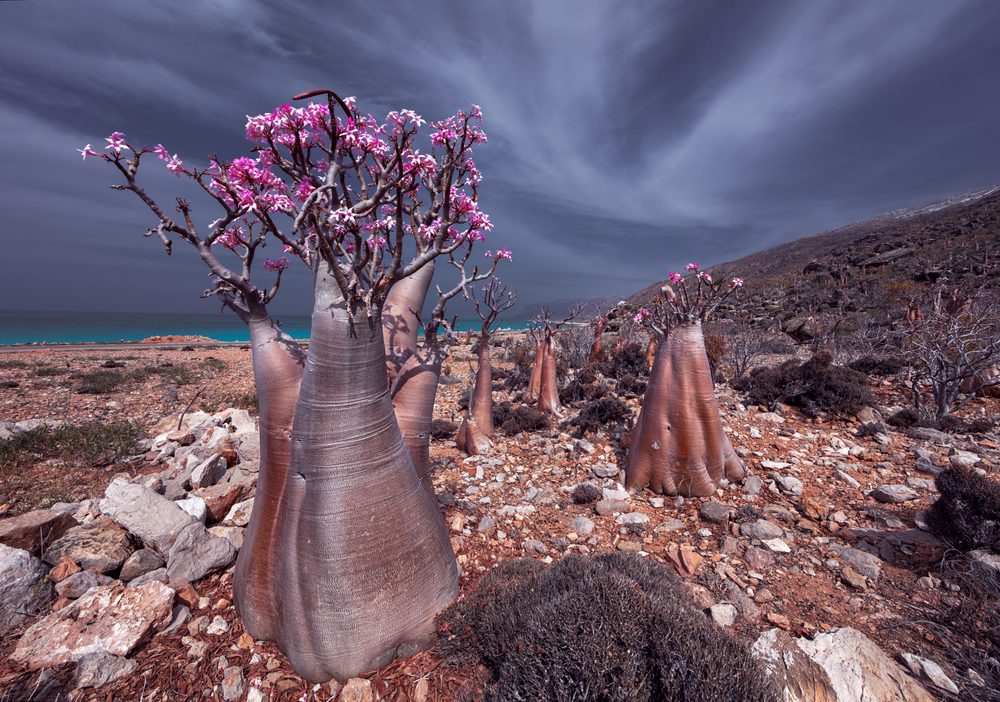Steeped in mythology and peculiar plant life, Socotra is arguably among the most unique places on the planet. Unfortunately, this island of beautiful natural landscapes has since fallen on hard times after becoming entangled in the messy civil war of Yemen, one of the globe’s worst humanitarian crises.
Socotra is located in the Indian Ocean about 340 kilometers (210 miles) off the coast of Yemen, not far from the tip of Somalia at the mouth of the Gulf of Aden. It’s technically an archipelago made up of four islands, Socotra being the largest by some margin.
The island is known for its unique trove of biodiversity that includes many species not found anywhere else on planet Earth. According to UNESCO, 37 percent of Socotra’s 825 plant species, 90 percent of its reptile species, and 95 percent of its land snail species do not occur anywhere else in the world.
One of the most iconic species found here is the Dragon Blood Tree, an unusual-looking tree that acquired its name because it weeps blood-like red sap from its trunk.
Some believe that Cain and Abel were born in Socotra after their parents, Adam and Eve, were kicked out of the Garden of Eden. According to local folklore, the Dragon Blood Tree emerged when Cain committed the world’s first murder against his brother Abel, spilling his blood into the soil and allowing the tree to grow like a gory fertilizer.
The Bottle Tree is another unique plant endemic to the Socotra Islands.
Image credit: Olga Grinblat/Shutterstock.com
Despite its relative obscurity, the far-flung island is not free from the global pressures of climate change. One study in 2007 predicted that the number of Dragon Blood Trees could drop by almost half within this century as a result of the aridification of the island.
The Dragon Blood Tree is known as Dam al-Akhawain in Arabic, which translates to “the blood of the two brothers”. Even the name of Socotra itself is said to have derived from the Arabic “suqs qutra”, which means “the market of dragon’s blood”.
Owing to its natural beauty, the island is sometimes known as the “Jewel of the Gulf of Aden” or the “Galápagos of the Indian Ocean”.
However, this idyllic paradise is under threat. Socotra was historically part of Yemen, but recent years have seen it fall under the influence of the United Arab Emirates (UAE).
In 2018, the UAE deployed military forces to the island as part of the ongoing Saudi Arabian–led intervention in the Yemeni Civil War. While no blood was reportedly split, they had effectively invaded the island and established political control.
The UAE was accused of planning to transform the island into a “permanent military outpost-cum-holiday resort”. Critics also claimed Emiratis were trying to smuggle protected plants and animals out of the island for their nefarious purposes. Following years of complicated political jostling, the UAE-backed Southern Transitional Council took command of the island in 2020.
With no end in sight for the Yemen Crisis, Socotra is awkwardly stuck in the middle of the conflict in the meantime.
Nevertheless, there is still hope. Despite the troubles faced by Socotra and its iconic Dragon Blood Tree, there are still ongoing conservation efforts that hope to preserve the island’s richness for future generations.
Source Link: Socotra: Legend Of Cain And Abel Lives On At This Troubled Island
